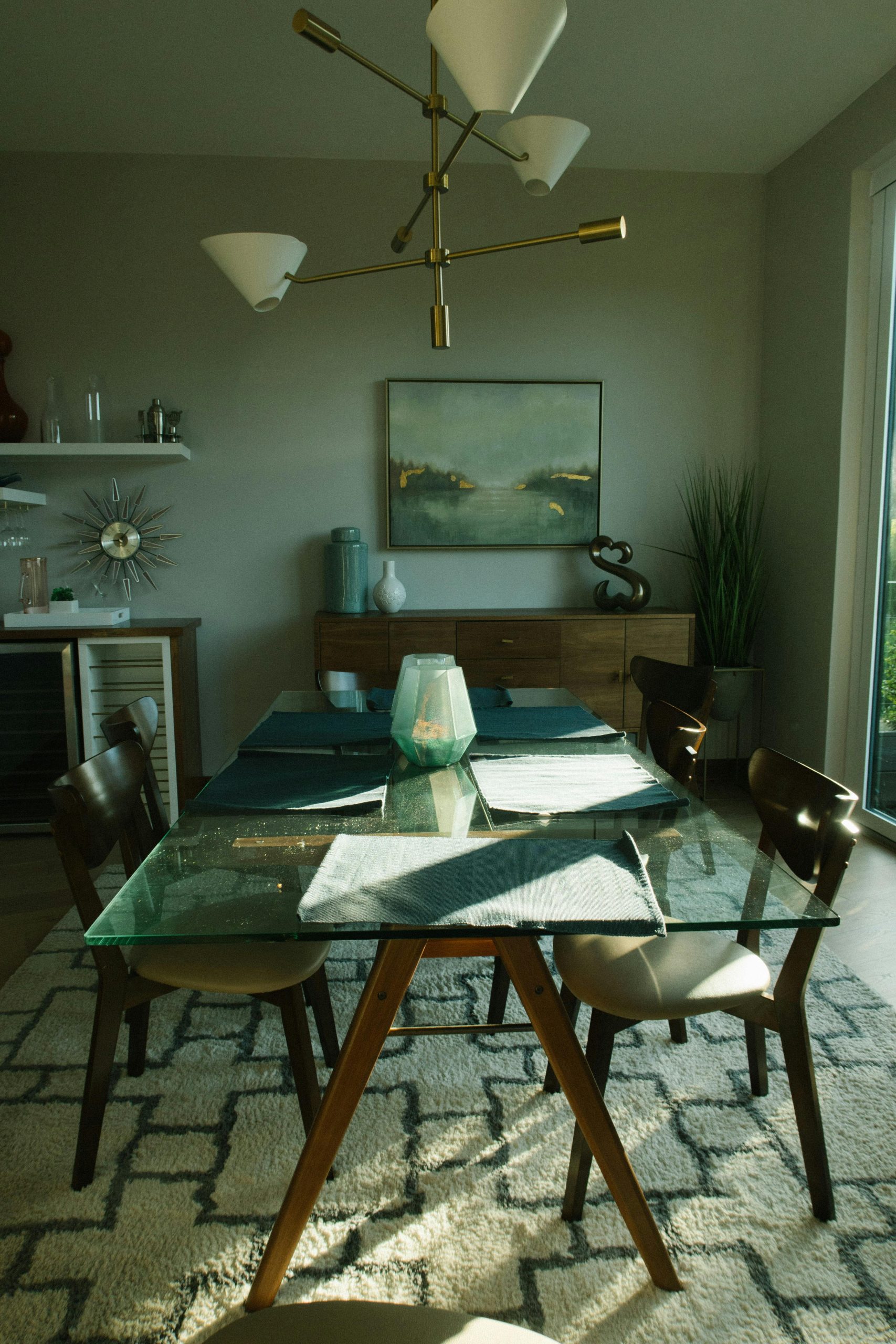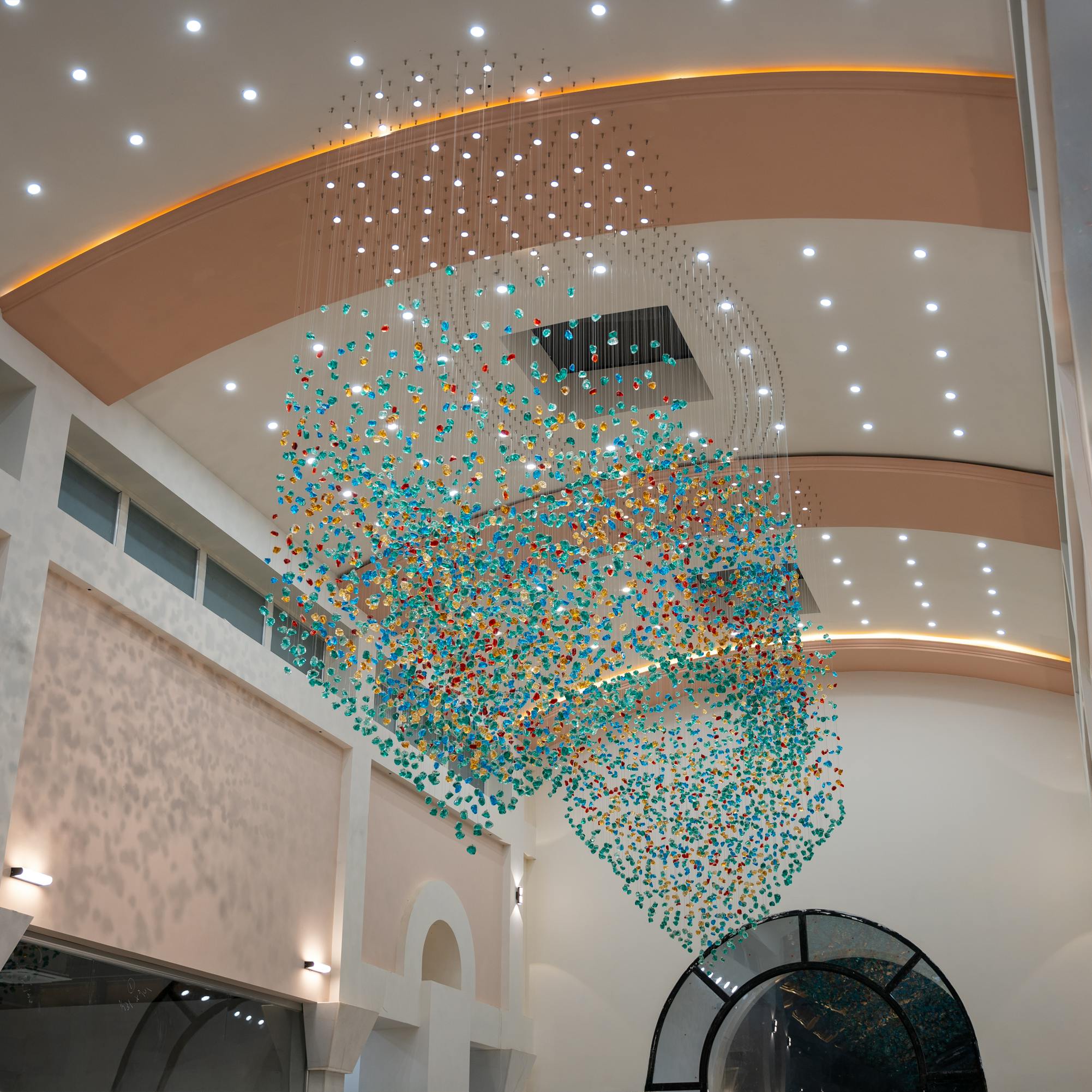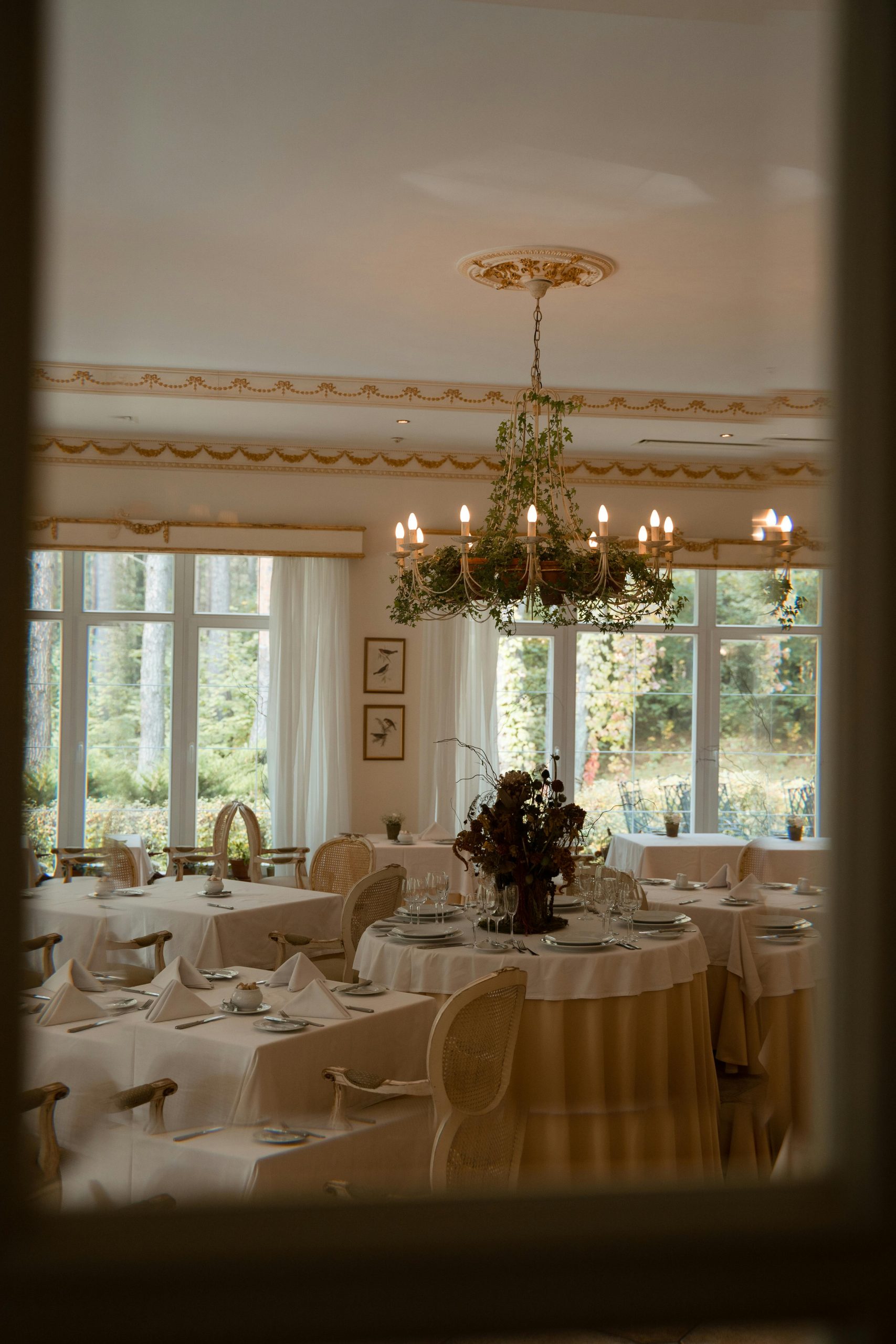Introduction to Chandelier Lighting in Dining Rooms
Contents

Importance of Chandelier Lighting
Chandeliers enhance dining spaces by creating a pleasant atmosphere for meals. They serve as more than just light sources; they act as focal points that attract attention and set the tone. Choosing the right chandelier ensures balanced light distribution, providing both comfort and functionality.
Overview of Chandelier Styles and Trends
Chandeliers range from classic crystal designs to modern minimalist fixtures. Current trends favor statement pieces that blend functionality with artistic elements, such as geometric shapes and mixed materials. These styles not only provide illumination but also enhance the dining experience.
Selecting the Ideal Chandelier for Your Dining Room

Factors to Consider Before Purchasing
When choosing a chandelier for your dining area, take into account the room size and the dimensions of your dining table. The chandelier should enhance the space without overwhelming it. Also, match your selection with the existing decor and your personal style to ensure it fits seamlessly into the room.
Types of Chandeliers
- Crystal Chandeliers: These traditional fixtures bring elegance and are ideal for formal dining rooms.
- Modern Chandeliers: Featuring sleek lines and innovative designs, modern chandeliers suit contemporary spaces with their clean look.
- Rustic Chandeliers: Best for country or farmhouse-style dining areas, rustic chandeliers use natural materials like wood or wrought iron to add warmth.
Advantages of Correct Chandelier Placement

Enhancing Room Aesthetics
A well-placed chandelier serves as a focal point, aligning with the room’s decor to improve its overall look. Proper placement highlights architectural features and matches the interior design, turning ordinary spaces into visually appealing areas.
Improving Dining Experience
The ambiance of a dining area is crucial, and a well-placed chandelier enhances this by providing a soft, inviting light. It not only brightens the meal but also creates a cozy setting that encourages conversation and enjoyment.
Optimizing Light Distribution
- Even Illumination: Proper placement ensures light is distributed uniformly across the table, reducing shadows and glare.
- Adjustable Intensity: Many chandeliers feature adjustable lighting, allowing you to set the perfect ambiance for any occasion, from family dinners to formal gatherings.
- Enhanced Functionality: Optimizing light distribution makes a chandelier not just a decorative piece but also improves the dining space’s usability, supporting activities like dining and discussions.
Installation Tips for Chandeliers

Preparing for Installation
Before starting your chandelier installation, gather all necessary tools and components. Accurately measure the space above your dining table to determine the correct placement and height of the chandelier, ensuring it fits well within the room’s layout.
Safety Considerations
- Turn Off Power: Always switch off the electrical power at the circuit breaker before beginning the installation.
- Check the Ceiling Support: Ensure the ceiling junction box is strong enough to support the chandelier’s weight to avoid any accidents.
DIY vs. Professional Installation
Installing a chandelier can be a DIY project for those with electrical knowledge, but the fixture’s complexity and weight often require professional help. Experts ensure secure mounting and proper wiring. Professional installation is recommended for intricate or heavy designs to ensure safety and stability in your dining space.
Maintenance and Care for Chandeliers

Cleaning Techniques
To keep your chandelier looking its best, regularly dust it with a soft, dry cloth to prevent dirt buildup. For a more thorough cleaning, mix mild dish soap with warm water and gently wipe each crystal or glass piece. Dry immediately to avoid water spots. Always ensure the light is off and cool before you start cleaning.
Regular Maintenance Tips
- Inspect Fixtures: Regularly check the chandelier’s fixtures and fittings to ensure they are tight and secure.
- Change Bulbs: Replace bulbs as needed to maintain even lighting and prevent overheating.
- Handle with Care: Always handle your chandelier gently to avoid dislodging or damaging any parts.
When to Seek Professional Help
If your chandelier is very dirty, has electrical problems, or needs structural repairs, it’s best to hire a professional. Experts can handle complex cleaning, electrical repairs, and ensure your chandelier remains a safe and attractive feature in your dining area.
Chandelier Height Guide: Optimal Placement Above Dining Tables

Key Principles for Chandelier Placement
For optimal aesthetics and functionality, hang a chandelier 30 to 36 inches above a dining table. This height ensures effective illumination without obstructing views or overwhelming the space with excessive brightness.
Adjusting to Table and Room Dimensions
- Table Size: Ensure the chandelier’s size matches your dining table. A larger table may need a bigger or more intricate chandelier for proper balance.
- Ceiling Height: For ceilings above the standard 8 feet, hang the chandelier 3 inches higher for each additional foot of ceiling height. This keeps the chandelier effective and well-proportioned in the room.
Chandelier Height Guidelines for Dining Tables
Optimal Chandelier Height Above Dining Tables
Imagine the perfect lighting at your next dinner party, with a chandelier that not only illuminates but also captivates. The key is in its placement. Suspended with precision, your chandelier should hang 30 to 34 inches from the tabletop if your ceilings are the standard 8 feet. For higher ceilings, raise your chandelier by an additional 3 inches for every extra foot.
Consider the size of your table; a larger table may require a higher chandelier to maintain visual balance. Design details matter. A chandelier with an open bottom might need to be higher to prevent glare, while a solid-bottomed one can hang lower, creating a cozier atmosphere.
The goal is to create an ambiance that’s both inviting and intimate, where light enhances conversations and the dining experience. These guidelines are your starting point—adjust them to fit your room’s unique characteristics and the chandelier’s design.

Adjustments are encouraged. Your dining space is unique, so let your chandelier complement your home’s architecture and style.
Calculating the Ideal Chandelier Height
To achieve the optimal chandelier height above your dining table, aim for a drop of 30 to 34 inches from the ceiling for an 8-foot ceiling. For higher ceilings, add 3 inches for each additional foot of height.
Balance is crucial. A large chandelier makes a bold statement, while a smaller one offers subtle elegance. It’s not just about lighting; it’s about creating the right atmosphere. A well-placed chandelier becomes the room’s focal point, enhancing the overall ambiance.

With these guidelines, you can hang your chandelier with precision, transforming your dining space into a well-lit, harmonious area.
Choosing the Right Size Chandelier for Your Dining Room
Selecting the right chandelier for your dining room involves balancing light and space. Aim for a chandelier that spans one-half to two-thirds the width of your table. This ensures a balanced look that complements the room without overwhelming it.
For rooms with high ceilings and ample space, consider a larger or multi-tiered chandelier to add elegance and fill the vertical space effectively. In smaller rooms, a modest chandelier will provide sufficient light while maintaining a cozy atmosphere.
Height is also important. Ensure there is at least 30 inches between the chandelier’s base and the tabletop. This clearance is essential for both aesthetics and comfort, allowing for easy conversation and a welcoming ambiance.

When choosing a chandelier, remember:
- Proportion is Key – Select a size that complements your table and room.
- Consider the Ceiling – High ceilings call for larger or tiered chandeliers.
- Intimacy for Smaller Spaces – A smaller fixture maintains a cozy atmosphere.
- Clearance Counts – Maintain at least 30 inches from table to chandelier base.
The Art of Chandelier Height in Dining Room Design
Imagine a chandelier, suspended like a jewel, casting a warm glow over your dining table. The right height is crucial—it’s the difference between a room that feels welcoming and one that’s simply passing through. Hovering 30 to 34 inches above the table for an 8-foot ceiling, the chandelier becomes an intimate part of your gatherings. For higher ceilings, add three inches per extra foot to maintain that cozy ambiance.
It’s a delicate balance of light and space. Too high, and the chandelier loses its connection to the diners; too low, and it might interrupt a conversation. The goal is to strike a perfect chord, where light enhances every shared story and every quiet moment.
A chandelier is more than a source of light—it’s a statement piece that can elevate the ordinary to extraordinary.

- Height Harmony: Tailor the chandelier’s elevation to complement your ceiling’s height and table’s size.
- Intimate Illumination: Ensure the light is close enough to envelop your guests in a warm, inviting glow.
- Visual Balance: Select a chandelier that anchors the room without overwhelming it.
Common Mistakes to Avoid When Hanging a Chandelier
Imagine positioning a chandelier above your dining table. The key to visual harmony is proportion. A chandelier that’s too large can dominate the space, while one that’s too small can go unnoticed. Finding the right balance is essential.
Height is another crucial factor. For an 8-foot ceiling, the ideal drop is 30 to 34 inches from the tabletop to the chandelier’s lowest point. For each additional foot of ceiling height, add 3 inches to maintain the correct proportion.
Electrical integrity and support are fundamental. Ensure your electrical boxes are reinforced and that your installation complies with local building codes.
Lighting should enhance the mood. Consider dimmable options or layered lighting to achieve the desired ambiance.
By avoiding these common mistakes, you can create a dining space that impresses. Remember:
- Scale and Proportion: Match the chandelier to your table’s size for visual harmony.
- Height Harmony: Keep the chandelier’s bottom 30-34 inches from the table for 8-foot ceilings, adding 3 inches per extra foot.
- Structural Support: Reinforce electrical boxes and follow building codes for a secure installation.
- Ambient Lighting: Use dimmers or layered lighting to set the perfect mood.

In Closing
In conclusion, placing a chandelier above a dining table enhances the room’s aesthetics and improves the dining experience with balanced light distribution. By following the recommended height guidelines—30 to 36 inches above the table for standard ceilings—homeowners can achieve a functional and stylish setup. This ensures the chandelier serves as both a focal point and a source of ambient lighting, fostering a welcoming dining space. Remember these principles when selecting and installing your chandelier to create a beautifully lit and inviting area.
